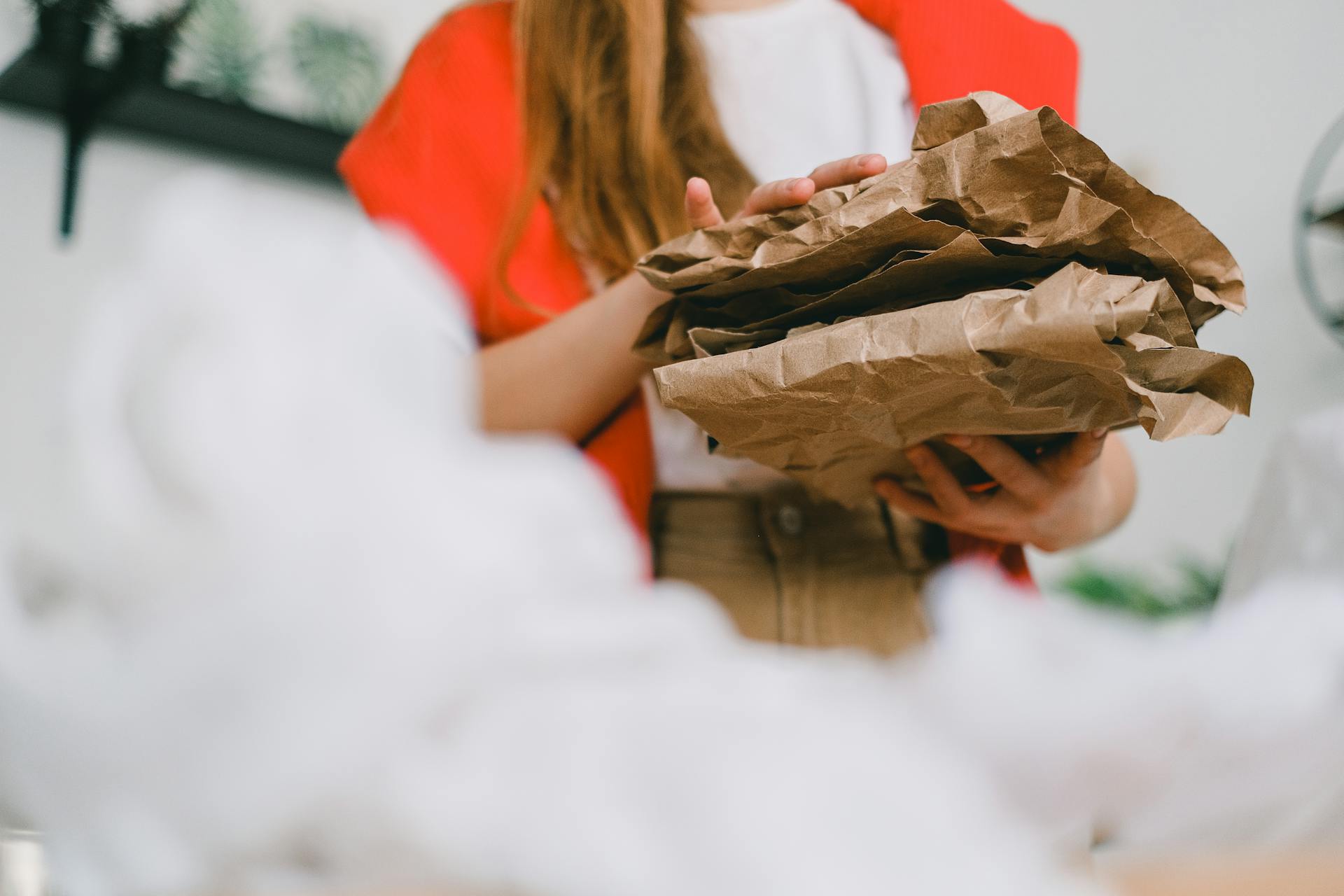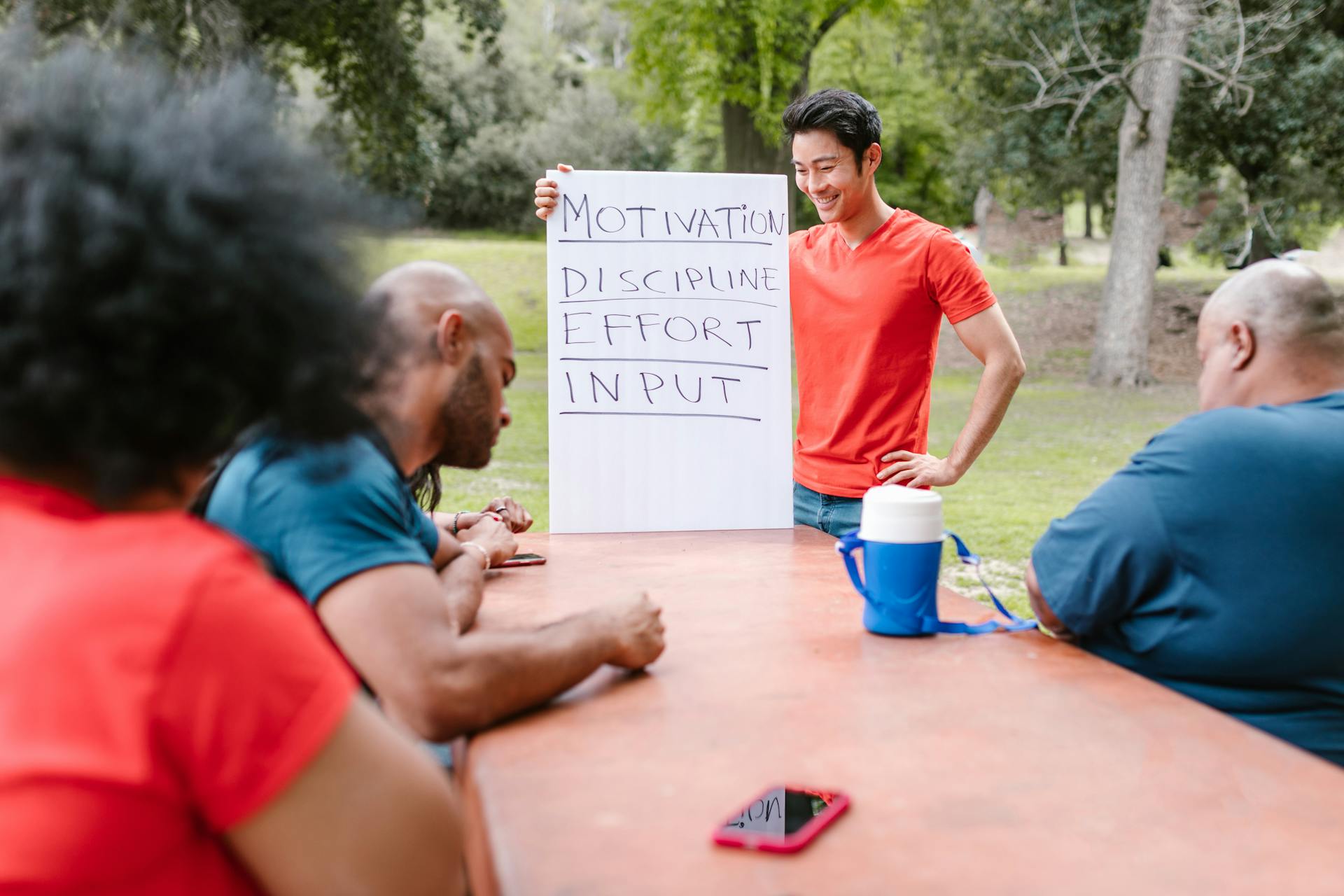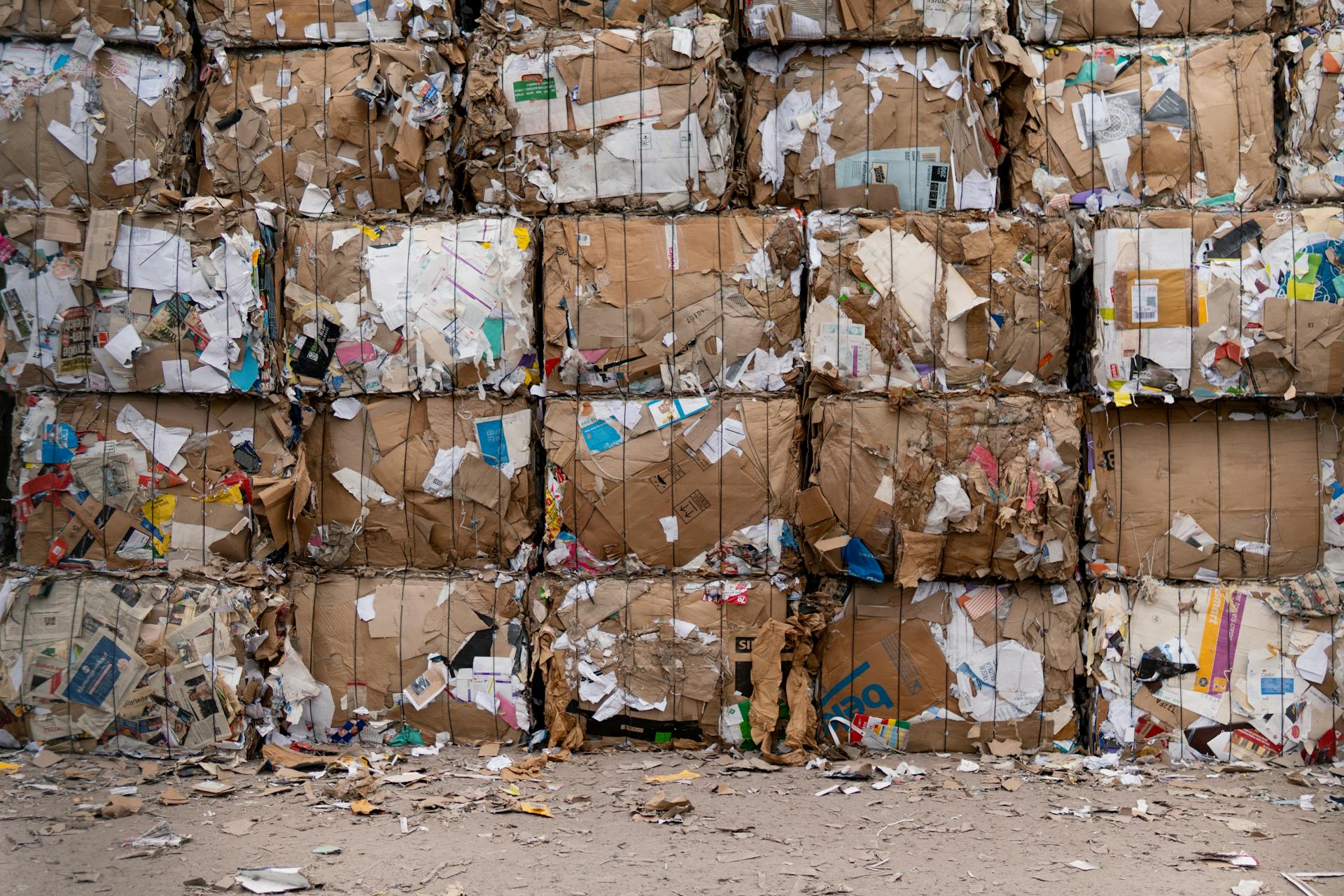
So what is zero waste? It's a lifestyle that has gained popularity in recent years, as more and more people become aware of the impact that their consumption habits have on the environment. Essentially, the goal of zero waste is to produce as little waste as possible, by reducing, reusing, and recycling.
At its core, the zero waste movement is about taking responsibility for our actions and recognizing that every choice we make has an impact. From the products we buy to the way we dispose of them, every decision we make can either contribute to or reduce the amount of waste that ends up in landfills or polluting our oceans. Zero waste challenges us to rethink our relationship with consumerism and encourages us to take a more holistic approach to our lives.
In this article, we'll dive deeper into what zero waste entails, how it differs from other forms of environmentalism, and why it's such an important movement in today's world. Whether you're already familiar with zero waste or just getting started on your journey towards living a more sustainable lifestyle, there's something here for everyone. So let's get started!
A unique perspective: Waste Properly
The Origins of Zero Waste: How It All Started
Zero waste living has become a popular movement in recent years, but where did it all begin? The jar made famous by zero-waste Bea Johnson may have turned people onto the idea, but the concept of reducing waste has been around for decades. Sustainable living has always been an important aspect of easy society, but with the rise of consumer-driven world, trash cans and garbage cans started filling up on a daily basis.
The average American produces 4.9 pounds of landfill-bound garbage every day. That's a lot of waste end up in landfills, food hazardous materials sitting alongside light bulbs, plastic paper and other everyday items. In fact, studies have found that even items in perfect condition buried in landfills can cause leachate generation - nasty stinky stuff that can pose significant threats to surface water and groundwater. Methane gas is also produced in these sites which is a greenhouse gas that traps heat and contributes to global warming.
Seventy-five years ago, single-use items weren't as prevalent as they are now. Plastic is one major issue when it comes to waste reduction since it photodegrades slowly into tinier pieces that can take hundreds of years to decompose. This poses a major issue for water pollution since plastic and other non-biodegradable materials don't break down easily and affect the environment negatively. However, with efforts towards zero-waste living gaining traction worldwide, we could be on our way to enjoying a pretty trash-free existence soon enough!
Begin Your Journey to a Waste-Free Lifestyle Today!

Zero waste is a lifestyle that aims to reduce waste production and ultimately eliminate it altogether. It involves making conscious choices about what we consume, how we dispose of it, and how we can reuse or recycle it. By embracing a zero-waste lifestyle, we can reduce our impact on the environment, save money, and live a more sustainable life. So why not start your journey today and see the positive impact it can have on both yourself and the planet?
1. Refuse
Refusing waste is an important step in reducing unnecessary waste. We unwittingly bring home daily items that aren't typically recycled, such as plastic produce bags and flimsy bags for bagging bananas. In fact, the average lifespan of a single-use plastic bag is only 12 minutes! By refusing these items, we can significantly cut down on the amount of waste we produce.
One of the easiest ways to start refusing waste is by saying no to straws and bringing your own reusable bag when shopping. Additionally, choosing to love fast fashion less and investing in quality pieces can also make a big impact. Remember, every little bit counts!
2. Recycle
Recycling is one of the steps towards achieving zero waste. It involves separating items that can be reused from those that cannot. Recycling helps to reduce waste production and makes sure that items worth usefulness do not eventually end up in landfills or oceans. The plastics industry is one of the biggest waste issues facing the world today, and recycling is a huge part of solving this problem.
However, recycling alone is not enough to solve waste issues. The focus should also be on reducing waste production by avoiding low-quality disposable items and choosing durable products instead. This means standing against big polluters and plastic making companies who prioritize profit over environmental sustainability. As consumers, we can do a great job by simply taking steps such as using reusable bags, bottles, and containers, and properly disposing of recyclables in facilities designed for them.
Discovering the Final Objective of Zero Waste

Zero waste is a simple concept that has gained momentum in recent years. It is a waste movement aimed at reducing and eventually eliminating waste sending to landfills, incinerators or even the ocean. The ultimate objective of zero waste is to create a circular economy where all resources are kept in use for as long as possible.
The idea behind this concept is to reduce waste by rethinking our consumption patterns and production systems. By adopting a zero-waste lifestyle, we can minimize the amount of trash we send to landfills, thus reducing our environmental impact. The final objective of zero waste is to create a world where resources are not wasted but reused, recycled or upcycled. This will require everyone's participation in the reduction of waste generation and proper management of resources.
Discover How to Achieve Zero Waste without Compromise
Zero waste is a concept that aims to eliminate material waste and landfill usage. It involves reducing traditional forms of packaging, such as common one-way gable-top paperboard cartons, one-way aseptic cartons, one-way recyclable glass bottles, and one-way milk bags. Instead, reusable returnable glass milk bottles that are home delivered are used. The system claims to reduce material usage by 80-90% from a zero-waste standpoint. Primary input is minimized through reverse logistics system returns, cleaning inspection sanitization and reuse eventually.
To achieve zero waste from a life cycle assessment perspective means minimizing wash water detergent transportation heat bottle caps, etc. Even recycled waste creates waste when it has to be transported for recycling or remanufacturing. Therefore, online shopping orders with multiple items in an outer box or safe shipping requires easier transport rather than each item having its own outer box which creates more material waste. A heavy-duty bottle can replace multiple single-use containers and lasts for over 50 uses before being recycled again. Achieving zero waste may seem challenging at first, but it's achievable if you start small and become more conscious of your everyday choices.
1. Software recycling[edit]
Software recycling is an essential part of zero waste design in the software industry. In essence, it means reusing software objects by copying code snippets multiple times and using them to design new applications. This not only conserves human effort but also ensures that code functionality is vastly superior to what can be achieved with a fresh start.
The best part about software recycling is that it can be done at minimal cost. All you need is access to software storage mediums like consumable diskettes or internal drives, and you're good to go. Waste correctly identifies that avoiding wasteful behavior should be central to all aspects of life, including the software industry. So why not join the movement and start recycling your code today?
2. Use of zero waste system[edit]
Zero waste is a special feature of the waste hierarchy design principle. It applies equally to all types of waste, from toxic chemicals to benign plant matter. The goal is to eliminate destructive methods of disposal and instead strive for community sustainability through reduced energy wasting and existing reuse efforts.
The zero waste system encompasses redesign and repair, refurbishment, and re-manufacturing. This general principle aims to reduce consumption patterns that lead to enforced poverty while promoting educational opportunities for human potential. As the recycling movement slowly branches out from its solid waste management base, issues surrounding waste management limitations become apparent. However, with more support from government laws and increased awareness of atmospheric purity and radioactive resources from nuclear power plants, zero waste can be generally reused to benefit society as a whole.
Mastering the Art of Zero Waste for a Greener Future
Zero waste living is quickly becoming a rallying cry for individuals who want to make a difference in their daily lives. Waste home writer and activist Bea Johnson shares her passion for zero waste living, which prevents unwanted items from entering the waste stream. This means swapping disposable products like plastic straws, promotional items you're offered, and junk mail for more sustainable alternatives that reduce waste while also saving resources.
One key component of zero waste living is mending and handing down items rather than continually buying new ones with short lifespans. Additionally, selling second-hand or reusing items that can no longer be used by one person is another way to keep them out of landfills. Recycling indefinitely is also important in reducing waste, but it's not enough to solely rely on recycling as the solution. Rotting what's left through composting food scraps and paper pieces or using bamboo toothbrushes that return nutrients back into the soil are ways to ensure that fiber goes back into the earth instead of sitting in a landfill.
Ultimately, mastering the art of zero waste takes practice and intentionality. It involves being mindful of our consumption habits and making conscious choices about what we buy and how we dispose of it. By embracing this lifestyle shift, we can create a greener future for ourselves and generations to come while minimizing our negative impact on the planet.
Effortlessly Embrace a Waste-Free Lifestyle
Have you ever heard of the phrase "zero waste"? It's a movement that encourages people to reduce their waste output as much as possible, by buying daily necessities with minimal packaging, preserving traditional and regional cuisine, and supporting local ecosystems. This means avoiding fast food restaurants and livestock characteristic of industrial animal farming, which generates a lot of plastic waste.
In fact, did you know that Oceana Canada estimates that Canadians produce approximately 33 million tonnes of plastic waste every year? Only 28 million tonnes are collected for recycling or energy recovery. The rest ends up in Canadian landfills, which would be equivalent to stacking 24 CN Towers on top of each other every year. By embracing a zero-waste lifestyle, we can help reduce this environmental impact.
One way to start is by carrying reusable bags when grocery shopping or reducing the number of plastic bags used by opting for alternatives such as cloth or paper bags. Additionally, investing in reusable containers for food storage will help eliminate single-use plastics such as cling wrap and ziplock bags. These small changes can make a big difference in the amount of waste we generate and can contribute towards making our world more sustainable.
Discovering Places Where Nothing Goes to Waste

Zero waste is both a goal, including the Waste 2040 strategy in the United Kingdom, and a practice that has been adopted by many cities and countries worldwide. Capannori, Tuscany was the first zero-waste city in Europe, while Sweden has implemented country-wide initiatives. In the United States, several cities like Austin, Texas; Boulder and Fort Collins, Colorado; Chula Vista, California; Minneapolis, Minnesota; San Francisco and San Jose, California have made significant strides towards zero-waste.
To achieve zero waste goals at the local level, governance networks are essential. Regional groupings with key stakeholders that include waste management local authority representatives, waste industry experts and government offices work together on a voluntary basis to develop clear government policy. Environmental NGOs and the waste industry also play an important role in promoting this strategy. The capital-intensive option of waste incineration research highlights public support for more sustainable solid waste management practices.
In Taiwan, public opinion supports leading state efforts towards zero-waste goals. In the United States, the Zero-Waste International Alliance has adopted goals that multiple cities have integrated into their own plans. These cities include Fresno, Los Angeles, Oakland, San Francisco (including Alameda), San Jose and Pasadena. High-temperature destruction is one planned structure for achieving these goals. Steps recommended by organizations such as the San Francisco Department of Environment include composting to prevent waste reduction and maximizing diversion while reducing waste - all with product creation as the ultimate goal.
Ultimate Reflections on the Art of Zero Waste Living
Zero waste living is a lifestyle that aims to minimize the amount of waste we produce. It's all about making choices that reduce our environmental impact, and it takes work. This article helpful in understanding what zero waste living really is and how to practice it in your everyday life.
Living a zero waste life held many benefits, including saving money and reducing our carbon footprint. But it's important to recognize that this lifestyle may not be accessible to everyone, especially those who may not have access to bulk stores or live in areas without recycling infrastructure. We must also acknowledge that the zero-waste movement has been criticized for being dominated by privileged white individuals.
Despite its challenges, I'd love to encourage others to give zero waste living a try. Start small by bringing your own reusable bags and water bottles when you go out, or try making your own cleaning products instead of buying them in plastic containers. Remember, every little bit helps when it comes to reducing our impact on the planet. I hope you found this post helpful!
1. Share your thoughts
Zero waste is a lifestyle that focuses on reducing waste production to the barest minimum. It involves a conscious effort to eliminate or reduce the use of disposable items and finding eco-friendly alternatives. This concept is becoming more popular as people are becoming more aware of the impact of waste on the environment.
If you're interested in zero waste, it's important to start by making small changes in your everyday life. For example, carrying a reusable shopping bag or water bottle, avoiding single-use plastics such as straws or utensils, and properly disposing of electronic waste can all make a big difference. Additionally, sharing your thoughts about this topic with others can help spread awareness and encourage more people to adopt sustainable practices. Leave a comment below with your email address (not published required fields) and join the conversation!
Simple Steps to Begin Your Journey
Starting a zero waste lifestyle starts with acknowledging that we generate waste. Bea Johnson, a waste blogger, itemizes our component parts that make up waste: packaging, promotional items, poorly constructed and cheap materials, and whatevers handed to us. To begin your journey, start by streamlining your possessions. Follow the lead of Bea Johnson and her family. They sold their large home and moved into their forever home where they hadn't missed anything they had left behind.
After streamlining possessions at home, read up on waste responsibly. Learn about eco-friendly alternatives for all the products you use daily including cleaning products, personal care products, hygiene products, dry goods like nuts or grains to fermented foods. Lucky for us all today there are so many unpackaged products available in stores where you can bring reusable containers and fill them up at the store. Look for neighborhoods where there are stores that offer a wide variety of unpackaged products like the largest bulk food aisle in your local grocery store - this simple step can save you substantial savings on your entire grocery order.
Finally, an easy way to reduce waste is by carrying reusable containers when shopping or running errands. Takeout lunch? Bring a container from home! Nutritious foods need not be packaged in single-use plastics either; pop them in a reusable container at home before heading out the door. At home pop dishes right into the sink clean with no plastic wrap or baggies involved! Once these simple steps become second nature there will be no going back - living a zero-waste lifestyle isn't hard after all!
Exploring a World Without Waste: The Promising Tomorrow

What is zero waste? It's a low waste lifestyle that promotes the circular economy. The current linear economy extracts huge amounts of precious resources in a short period, only to be thrown away and end up in a giant garbage pile. In contrast, the circular economy means that all resources are fully reused and put back into the system. Individual actions matter in achieving this point today by buying products that are manufactured sustainably and supporting companies that practice the circular economy wed.
The entire system of industrial production relies heavily on fossil fuels and operates on a take-make-dispose economy. However, innovative systems are emerging that prioritize product longevity, renewability, and reuse. Designing products with these ways principles in mind can lead to innovative solutions like the rescued beeswax wrap as an alternative to saran wrap items. In 2002, architect William McDonough and chemist Michael Braungart wrote a book called Cradle to Cradle, which proposed remaking how we make things based on safe materials that can be safely returned as biological nutrients (compost) or technical nutrients (recycled indefinitely).
It sounds pretty lofty, but it's possible to start small and make changes that add up pretty quickly. For example, I suddenly stopped buying bottled water and started carrying my reusable water bottle everywhere I go. I also switched from single-use plastic bags to reusable ones when grocery shopping. By making these small changes, we can reduce our impact on the environment while supporting companies that promote high-quality materials and sustainable practices towards a world without waste.
Embrace Sustainability: Join the Waste Challenge Today!
What is zero waste? Simply put, it's the goal of eliminating trash by reducing and reusing as much as possible. This movement towards more thoughtful consumption has gained momentum in recent years, with waste stores popping up around the world and Copenhagen being named the first zero waste city. However, the question remains: how can we all join in and embrace sustainability in our daily lives?
Discovering the Roots of Zero Waste
The zero waste movement has been gaining popularity in recent years, but its roots can be traced back to the 1970s when a chemist named Paul Palmer founded Waste Systems ZWS. His company focused on finding innovative solutions for excess chemical and industrial waste, which was being discarded in enormous amounts at that time. Electronics companies in Silicon Valley were among the first to adopt this approach, recognizing the value of reusing perfectly usable industrial chemicals instead of simply throwing them away.
In more recent years, the zero waste movement has gained mainstream attention thanks to advocates like Bea Johnson. After becoming frustrated with the unsustainable nature of municipal waste management practices, Bea Johnson decided to take matters into her own hands and essentially created the modern zero waste lifestyle. Her concept is simple: refuse what you don't need, reduce what you do need, reuse what you already have, recycle only what cannot be refused, reduced or reused, and rot (compost) everything else. By following these principles, individuals can drastically reduce their environmental impact and contribute to a more sustainable future for all.
Frequently Asked Questions
Can you really live a zero waste life?
Yes, it is possible to live a zero waste life by reducing, reusing, and recycling one's waste materials. However, it requires commitment and lifestyle changes to achieve this goal.
What is a zero waster's goal?
A zero waster's goal is to reduce their environmental impact by producing as little waste as possible. This can involve practices such as composting, recycling, and using reusable products.
How to start a 'zero waste' lifestyle?
To start a zero waste lifestyle, begin by reducing your consumption of single-use plastic and packaging, opting for reusable items instead. Look into composting and recycling programs in your area, and consider buying secondhand or locally sourced goods to minimize your carbon footprint.
What is the best framework for zero waste living?
The best framework for zero waste living is to follow the 5 R's: Refuse, Reduce, Reuse, Recycle and Rot. It emphasizes on conscious consumerism and reducing waste generation by refusing single-use items, reducing consumption, reusing items as much as possible, recycling properly and composting organic waste.
How did we start the Zero Waste lifestyle?
We started the Zero Waste lifestyle by making small changes in our daily habits such as bringing reusable bags and water bottles, composting, and buying in bulk. These actions reduce waste and help protect the environment for future generations.
Featured Images: pexels.com


